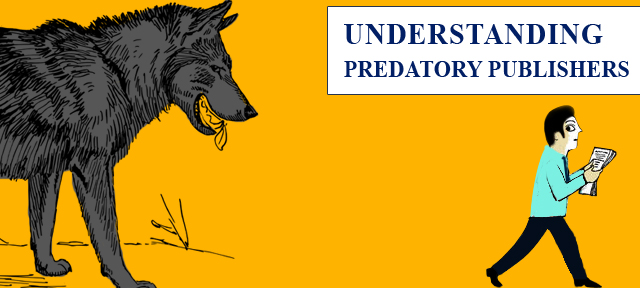Predatory publishing is one of the biggest banes of academic publishing today. Predatory journals are named thus because they focus on duping unsuspecting authors into sharing their hard-worked publication just for the ulterior motive of minting money at the expense of the authors.

The issue of predatory publishing was first raised by Jeffrey Beall, an academic librarian, and researcher at the University of Colorado, Denver USA. Jeffrey sensed something was wrong when he noticed he was receiving multiple spam mails from spurious publishers asking for him to share his articles with them for publication. He started doing some background research on these journals only to discover they were nowhere near what they claimed to be. Beall took up arms against these predatory journals, even coining the term himself to identify and categorize this menace. Today, Beall runs his own list of predatory journals that are well accepted globally as a reference to check for such journals.
The problem of predatory publication stems from 2 factors; the first is the rise of Open access journals, while the second is the practice of Article Processing Charges or APC developed by some journals.
Open access is a good initiative, that seeks to harness the benefits of digital platforms to allow more open, interactive publishing platforms for authors, editors, peers, and readers. Conventional publication processes with anonymous peer-reviewing take a lot of time for authors to get a publication. The system is criticized for lack of transparency and vested interests of peers in sabotaging good publications. Open access was meant to offer a more transparent and affordable publication platform for authors. While there are many genuine and good open access journals, the development also opened up the path for Predatory publishers.
This is where the criticality of APC comes into play. Conventional journals relied on subscription charges for sustenance. However, it was a challenge for open access journals which were newly evolving. This then led to the development of APCs where such journals charged authors a nominal fee to get them published. For open access journals, they saved a lot on printing and distribution charges, and hence even a low or reasonable APC was enough to cover the expenses. APC also allowed the concept of ‘gold open access’ where authors often upload their published papers for free access to peers and students.
Ideally, an APC is charged only after the publication gets past the peer review or editorial process. Unfortunately, some platforms exploited the notion of APC to allow anyone to publish as long as they were willing to pay money. They took it forward to start luring authors to pay money to publish with false promises of peers, editorial boards, etc. This is the main distinguishing factor for predatory publishers.
The problem of predatory journals is being contested collectively by academia, with many digital libraries now running their own tracking and reporting services. Any author is advised to first check the veracity of any journal soliciting their contribution to be safe from them.

